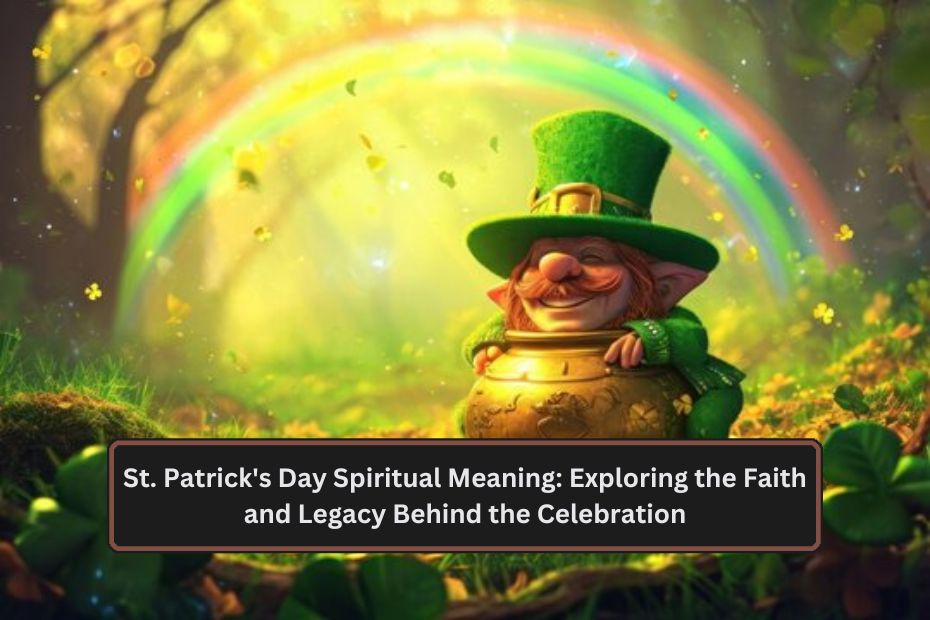St. Patrick’s Day, celebrated on March 17 each year, is often associated with vibrant parades, green attire, and Irish festivities. However, beneath the surface of the celebrations lies a deeper spiritual meaning rooted in faith, history, and cultural resilience. St. Patrick’s Day is not only a celebration of Irish culture but also a time for spiritual reflection on the life and mission of Ireland’s patron saint.
Who Was St. Patrick?
St. Patrick was a 5th-century Christian missionary credited with bringing Christianity to Ireland. Born in Britain, he was captured by Irish raiders and enslaved as a young man. During his captivity, St. Patrick found solace in prayer and faith. After escaping, he became a priest and later returned to Ireland as a missionary.
St. Patrick’s Mission and Teachings
St. Patrick dedicated his life to spreading Christianity in Ireland. He is often associated with the shamrock, which he used as a teaching tool to explain the Holy Trinity—the Father, the Son, and the Holy Spirit. His efforts contributed to the widespread acceptance of Christianity in Ireland, replacing pagan practices and shaping the country’s spiritual identity.
The Spiritual Significance of St. Patrick’s Day
While many enjoy St. Patrick’s Day as a cultural event, its spiritual meaning remains central to its origins.
Faith and Transformation
St. Patrick’s story reflects themes of faith, transformation, and perseverance. His journey from captivity to becoming a spiritual leader is a testament to the power of faith and resilience. For many, St. Patrick’s Day serves as a reminder to reflect on personal faith and the strength that comes from spiritual growth.
A Celebration of Christian Roots
St. Patrick’s Day also commemorates the introduction of Christianity to Ireland. It highlights the importance of the church’s teachings in Irish history and offers an opportunity for Christians to honor their spiritual heritage.
Symbolism of the Shamrock
The shamrock, a widely recognized symbol of St. Patrick’s Day, carries spiritual significance. Representing the Holy Trinity, it serves as a reminder of God’s presence in all aspects of life. This simple plant has become a powerful emblem of both Irish culture and Christian faith.
How to Embrace the Spiritual Meaning of St. Patrick’s Day
St. Patrick’s Day 2025 is a perfect time to connect with its spiritual roots. Here are a few ways to focus on the deeper meaning of the day:
- Attend a Church Service: Many churches hold special services on St. Patrick’s Day, reflecting on his life and contributions to Christianity.
- Engage in Prayer and Reflection: Take time to reflect on your spiritual journey and draw inspiration from St. Patrick’s perseverance and faith.
- Learn About Irish Christian History: Explore the history of Christianity in Ireland and the role of St. Patrick in shaping its spiritual identity.
- Incorporate the Shamrock: Use the shamrock as a tool for teaching or meditating on the Holy Trinity.
Balancing Faith and Festivity
While modern celebrations of St. Patrick’s Day often focus on parades and cultural festivities, it’s possible to honor the day’s spiritual meaning alongside its lighter traditions. Wear green, join the festivities, but also take a moment to remember the values of faith, community, and resilience that St. Patrick represents.
St. Patrick’s Day 2025 offers more than a chance to celebrate Irish culture—it’s an opportunity to reflect on the spiritual journey of a man who changed a nation’s faith. His legacy of courage, teaching, and perseverance inspires people to deepen their connection with their beliefs. By embracing both the festive and spiritual aspects of the day, we can honor St. Patrick’s enduring impact on Irish heritage and Christianity.
Visit Home

